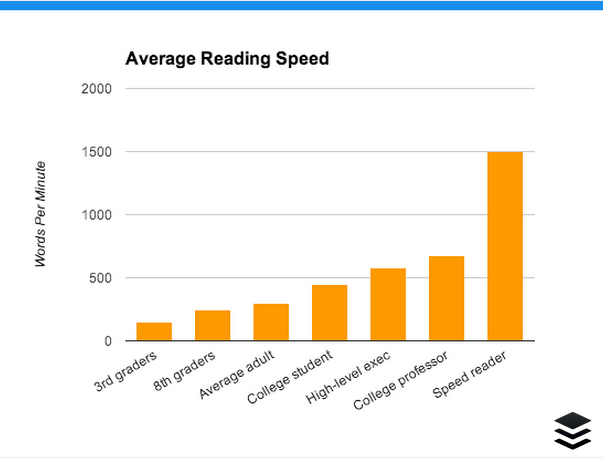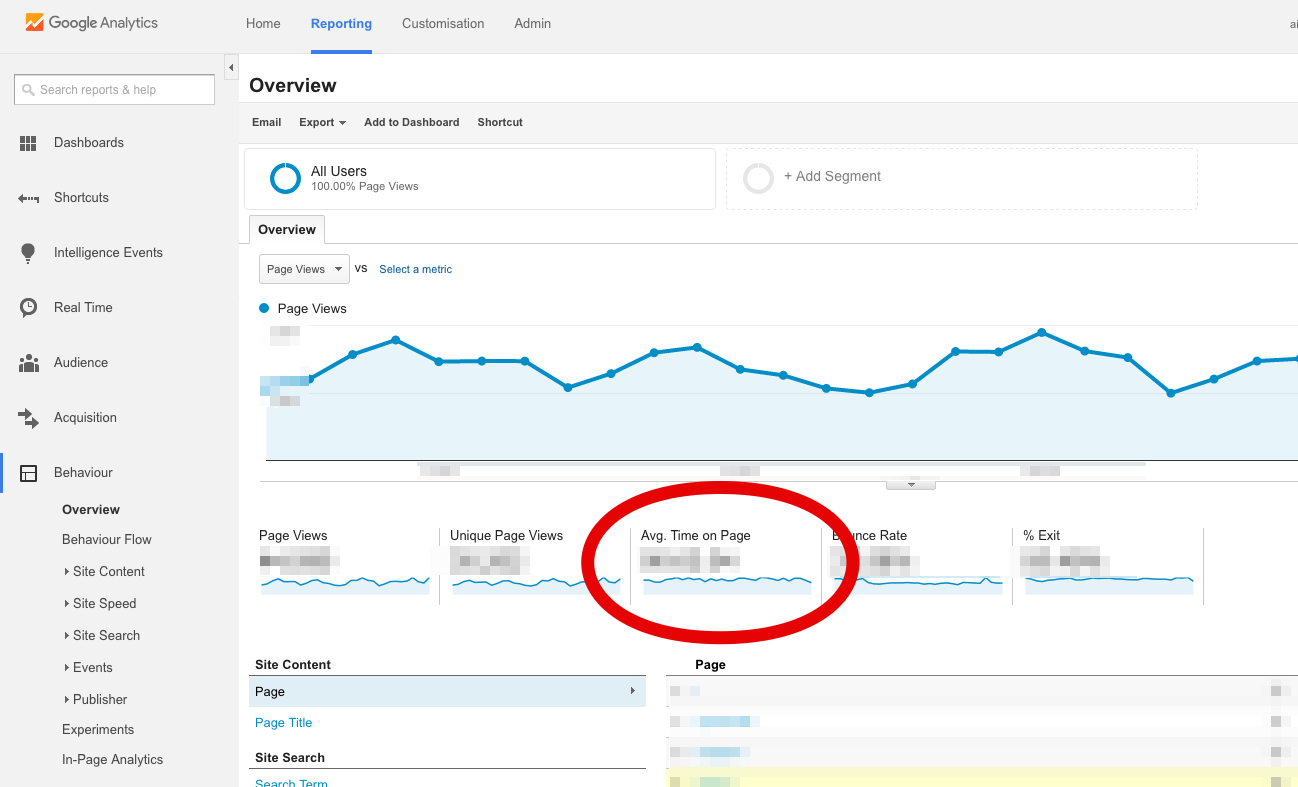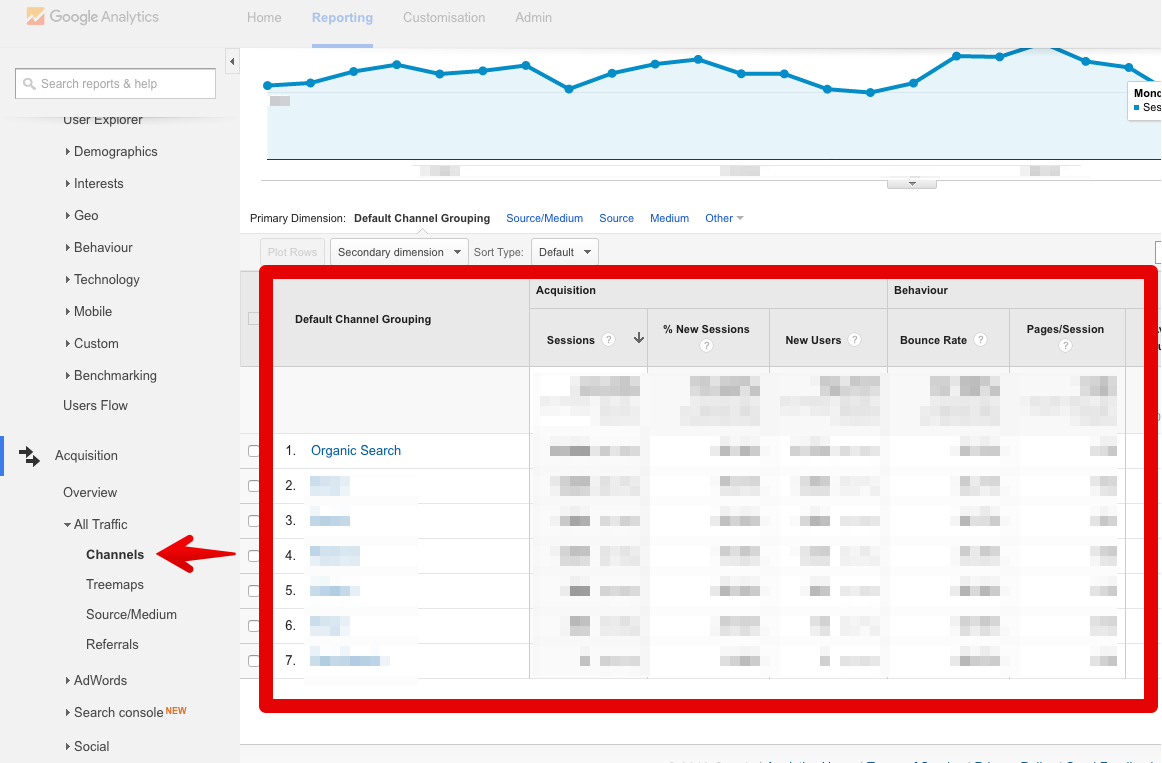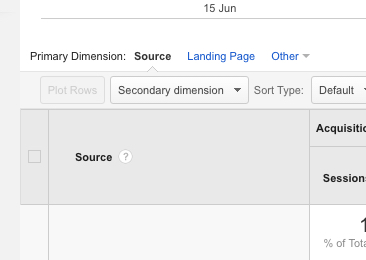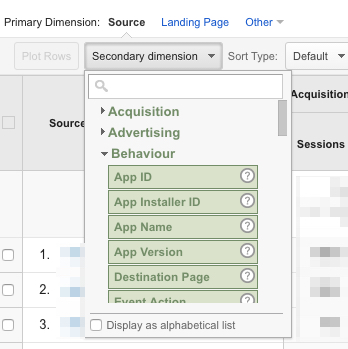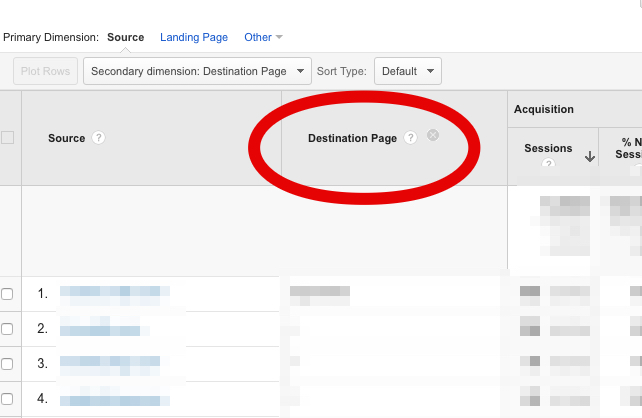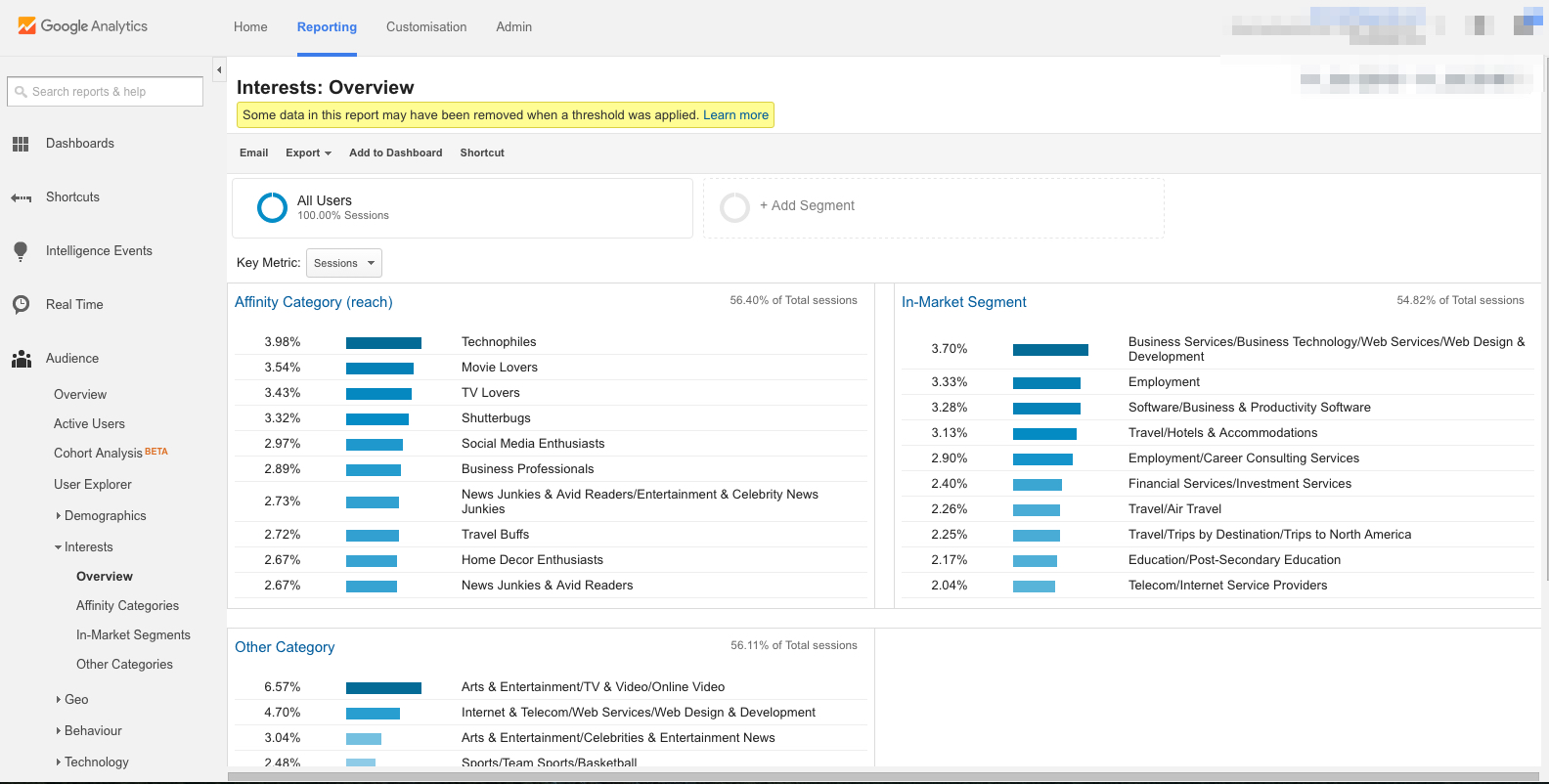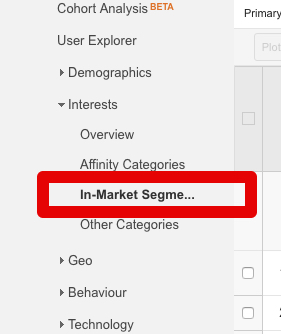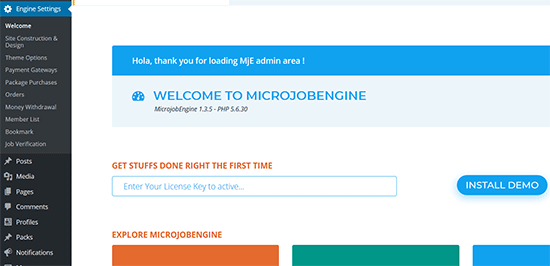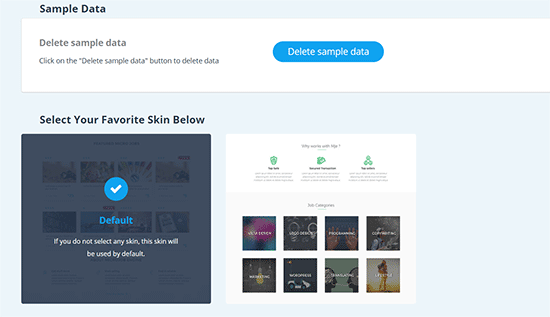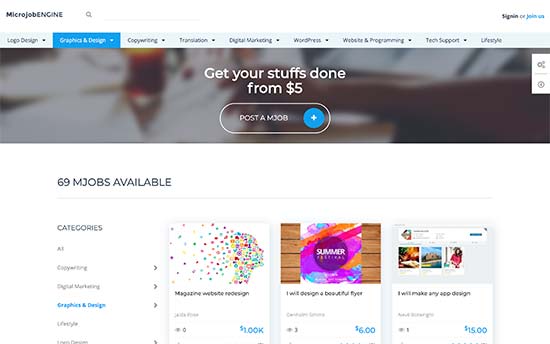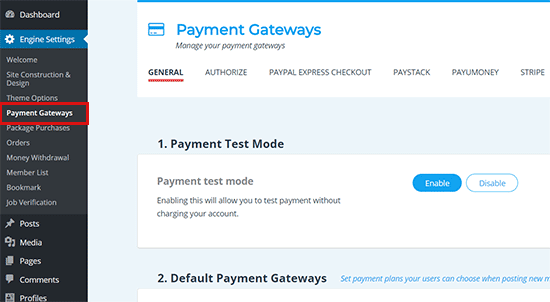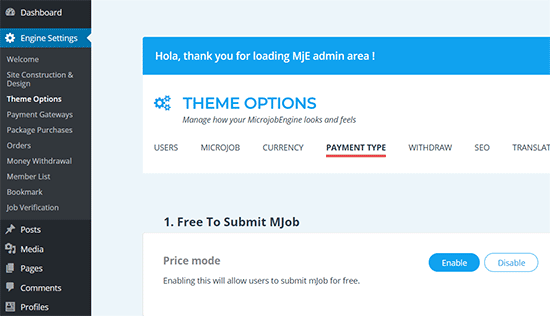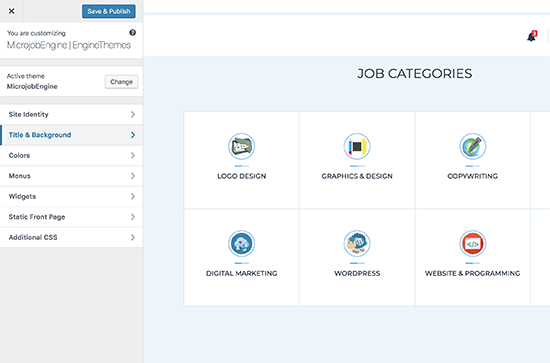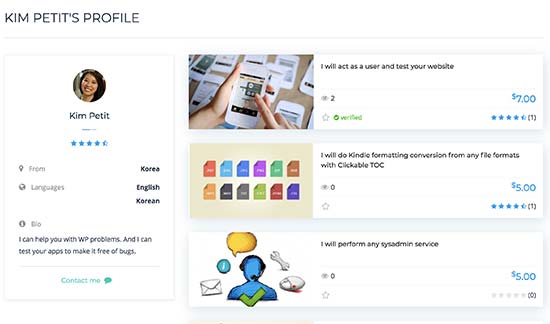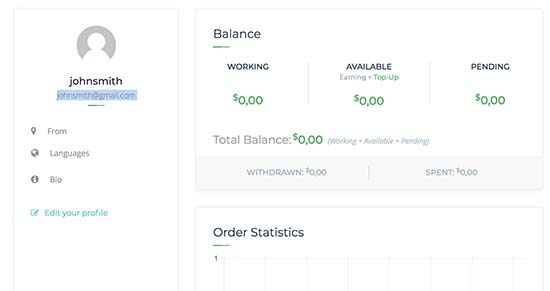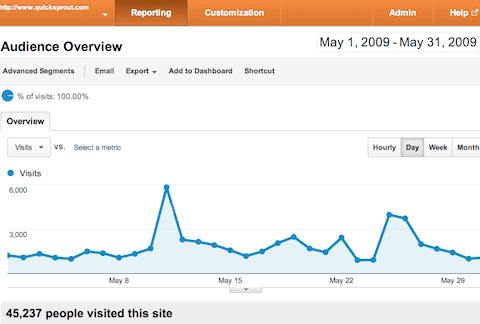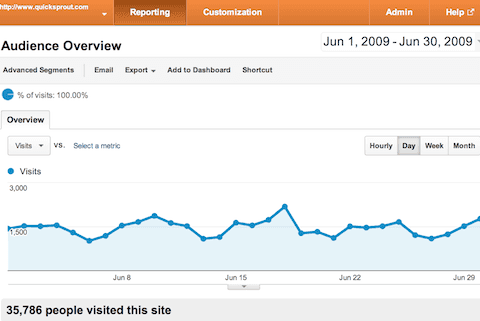Some jobs are easy to define and prepare for:
Want to be an engineer? Go to school and get an engineering degree.
Want to code for Google? Go to school and study computer science.
What do you do when you want to be a content marketer?
Go to school and study content marketing? Hmm…there doesn’t seem to be a program for that, please try again.
Sure, it wouldn’t hurt to study general business or marketing, but that’s not enough either. You’ll end up learning many things you don’t really need and not learning those you do need.
All the top content marketers I know have a wide variety of useful skills that closely relate to content marketing.
This is largely out of necessity.
Content marketing—the modern version of it—didn’t really become popular until the last few years.
If you really want to be a great content marketer, there’s only one place for you to get your education:
The real world.
But do note that the bar has been raised.
Creating great content isn’t enough anymore if you want your content marketing to be successful.
Today, you need to not only create that content but also promote it.
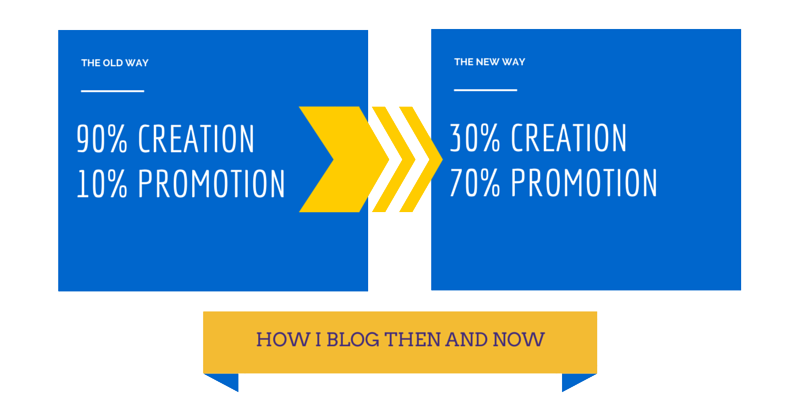
Many marketers have started to wake up to this fact, which is a good thing.
However, just because they recognize that promotion is important doesn’t mean they know how to do it effectively.
In my experience, only a small percentage of marketers possess the skills that make them effective promoters as well.
The big problem is that if you don’t have these skills, you’ll struggle to learn how to promote effectively.
The reason for this is that there isn’t much help out there.
When it comes to creating great content, you can study the content your favorite blogs publish and attempt to replicate it.
But it’s next to impossible to understand all the work that goes on behind the scenes to promote that content unless the creators are generous enough to share it with you.
It takes a special kind of marketer—the cream of the crop—to learn both from resources (like blog posts) and experience.
These are the complete content marketers that get the results everyone else wants.
In this post, I’ll explain in detail the most important skills that I believe all great content marketers need.
Let’s dive in.
1. The best content marketers all have this skill…
This first skill might be the most important.
Critical thinking.
As a marketer who is still finding your way, you’ll be spending a lot of time learning about different tactics you can use to promote your content.
These might be email outreach tactics, link building tactics, or social media tactics…you get the picture.
But not all marketers who try a specific tactic will succeed with it. You probably know that already from firsthand experience.
It’s not because of luck or skill. Although these factors may play a role, the main factor that determines how successful you are with a tactic is fit.
Some tactics work in some niches and situations better than in others.
If you blindly try different tactics, you’ll have some success but not as much as you’d like.
The really good marketers, or the ones who seem to “get it” really quickly, are the ones who can critically think about a tactic.
They don’t just read a blog post and think, “This is pretty cool; I’d better try it!”
Instead, they think about questions like these:
- Why does this tactic work?
- What niches would it work best in? why?
- Will this work for my content?
- Can I can tweak it in any way to make it even more effective?
- How can I test this?
Understanding a tactic before using it is different from just applying it blindly. I hope the reason behind those questions is clear.
Once you truly understand the tactics you learn, all of a sudden you are able to see where they fit together in an overall strategy.
The good news is that no one is born with critical thinking skills—these skills are developed.
And even better news is that you probably already have some, but maybe just need to consciously use them more often.
Regardless of where you are, let’s go through a complete example of how you would approach a tactic in real life.
Examining infographics with critical thinking: Here’s the situation: you come across an article I wrote about creating and promoting infographics.

Of course, your first reaction is excitement when I explain how infographics can be used to get thousands of visits.
And they can, for sure. But not in all situations.
After you read the post, you want to ask yourself the same questions I listed above.
Q: Why does this tactic work?
Infographics work because they are attractive, easy to consume, and can convey complex information quickly.
On top of that, really good ones stand out and get extra attention.
Because infographics are so shareable, you’ll get a ton of traffic if you can get the initial views to them. Providing an embed code underneath the infographic makes it easy to share (and gets you extra links).
Q: What niches would it work best in? Why?
Infographics are an image-based type of content. Therefore, they probably work best in image dominated niches. Think clothing, design, food, and even marketing to a degree.
The most important factor mentioned was that the topic needs to be interesting, which means that viewers need to care about it.
In “boring” niches like heating or bug removal, which are not that interesting to people (in general), it’s going to be tough to get the infographic to spread.
Q: Can I tweak it in any way to make it even more effective?
The reason why the effectiveness of infographics seems to be declining is that they’re becoming more commonplace.
So, if I can come up with a way to make mine more unique, I should be able to get better results. Perhaps, I can make a gifographic instead.
Q: How can I test this?
To test this tactic fairly, I would need to produce at least 5-10 professionally designed infographics.
This means I’ll likely need a budget of around $2,000-4,000.
I will then determine its effectiveness by looking at a few key metrics:
- cost per subscriber
- cost per link
- cost per visit
Then, I will compare those metrics to the metrics of other tactics I’ve used to determine if I should produce more infographics.
End questions. In reality, you’d probably want to ask yourself even more questions.
How many readers of this blog or any other marketing blog honestly do this after reading about a tactic?
While I have some of the most active readers I’ve ever seen, which is great, I would guess far fewer than half of the readers who read a post do this.
If you want to develop critical thinking skills, you simply need to practice thinking. Ask yourself hard questions and try to get the best answers you can.
It’s okay if they’re not perfect; you’ll get better over time.
2. A love for data analysis sets you apart
A great content marketer is a lover of both content and numbers, which is a rare package.
A great content marketer is results-based: It starts with knowing that you need a way of measuring your results.
To do this, you need to understand the role of metrics in a business. These metrics are also being called key performance indicators (KPIs).
Metrics are a way of describing goals.
If your goal is to increase readership, the metrics you’ll be concerned with are traffic and subscribers.
You can monitor metrics over time to see if you are making progress. If the progress is too slow, you can test different approaches and look at the metrics to see if they are working.
Although every content marketing plan has its own goals, there are a few metrics that are important in nearly every scenario.
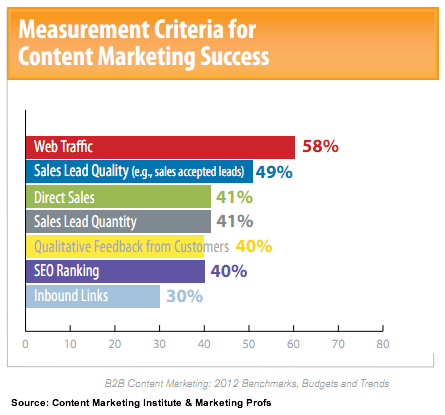
You’ll notice that those metrics cover numbers both before and after a sale.
The most common purpose of content marketing is to improve sales, so you’d better see an increase in revenue if you’re doing it right.
Data collection and analysis are the basic skills a content marketer needs: The first step is realizing that metrics are a necessary part of business.
You don’t need to obsess over them, but you do need to make sure you know how to track and analyze them.
Tracking is very simple.
Know how to install something like Google Analytics or KISSmetrics.
Analytics software not only tracks your readers’ behavior but also provides you with a dashboard for quickly organizing and analyzing it.
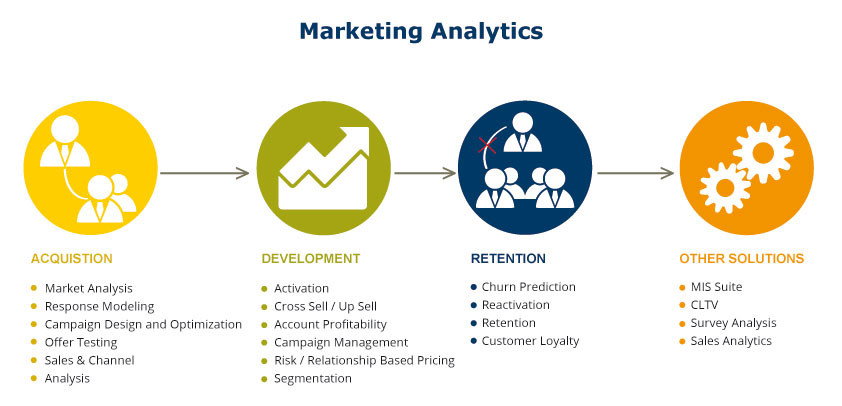
The first big obstacle content marketers need to overcome is learning how to use the analytics software.
You can find tutorials online to help with this, but the simplest way is to simply play around with it yourself and look through different tabs and settings.
The second obstacle is much larger.
You need to learn how to analyze that data.
You can get the basics of this pretty quickly:
- choose your metrics
- look at them over a valid time period
- assess whether the metrics have improved or worsened
The hard part is knowing how to analyze data properly.
Really good content marketers know how to look at the situation, conduct very specific tests, and segment the analytics data to provide meaningful information.
Often, new marketers will make decisions based on analytics, but they don’t look at the right set of users.
For example, if you had two versions of a blog layout and saw that one had a better time on-page, you might conclude that it’s better.
However, it’s possible that it’s really not if you dig into things like:
- browser
- returning visitors
- time of week
It may turn out that the second page performs better in all browsers except Internet Explorer.
That would lead you to investigate why that is, and you’d probably find out that it’s not showing up correctly. Fixing the errors would change the results of your experiment.
By having more experience and knowledge, that content marketer may have just made his or her business tens of thousands of dollars. Repeat that over the course of several years, and you see why a good content marketer is worth a lot.
This is a skill that needs to be developed through experience or mentorship by an expert. There are no shortcuts, e.g., you can’t just read a blog post about it and become an expert.
Every marketer should be able to do basic A/B testing: I’ve already mentioned testing a few times.
While there are a few types of experiments you can run, the most basic is an A/B split test.
First, you should understand what split tests are and why they are valuable.
They allow you to test two different versions of content to see which one leads to better metrics.

Split-testing is very useful for gaining continual small improvements in metrics such as conversion rate.
These small improvements add up to impressive results over time.
Second, you need to know how to run split tests and analyze the results.
Fortunately, it’s very simple now with modern software.
If you want a more detailed look at running a split test, you can refer to my guide on conversion optimization. Otherwise, there are just a few main steps.
First, you’ll need to pick a piece of software to help set up the test and track the results. For example, you can use Optimizely.

Then, you’ll need to create a hypothesis for a test.
The best split testers know how to test something that is likely to have a big impact on the metric you’re trying to improve.
These aren’t usually pulled out of thin air. Instead, they are determined based on analyzing analytics and user behavior data.
Software like Crazy Egg can show you how visitors use your website. You can use that information to make an educated guess about how to improve the clarity of your content.

Finally, you’ll need to determine a significant sample size and collect data. Most types of software do this for you nowadays.

At the end, you pick the winner and start again.
It will be a big benefit to understand the statistics behind split testing to spot mistakes and set up useful tests.
If you’ve never taken a statistics class, you can take one online free.
There are many, but here one popular class is Intro to Statistics: Making Decisions Based on Data
It’s not mandatory, but it’s a nice asset to have.
3. How far can you dig?
One question that I get all the time is: “How long does it take you to write your posts?”
Truthfully, it doesn’t take that long. Typically, I can do the actual writing in about 3 hours plus some time for editing.
But creating a post takes longer than that. It also takes a lot of research. Some posts, of course, will require more research than others.
Research is one of the most undervalued skills in a content marketer.
With respect to content marketing, there are a few main reasons why your ability to research effectively is so important.
Reason #1 – To understand your customer: If you want to be a good content marketer, you need to understand the type of reader you’re trying to attract.
If you don’t, you can’t produce content that they will be interested in.
You won’t be able to write about the right topics, and you won’t know how your readers enjoy consuming the information.
If you don’t research your target reader and understand them, you’re basically just guessing what they might like.
It can still work, but be prepared to produce hundreds of pieces of content until you learn what works.
Or do some research, and get it right the first time. Clients don’t want to pay you for months on end while you figure things out by trial and error.
So, how do you actually research your reader and customer?
There are tons of ways.
And there are no wrong answers.
You might start by paying attention to what readers are saying in the comments of your, or your competitor’s, website.

Answer questions like:
- what do they like about the content?
- what don’t they like?
- what other subjects are they interested in?
- what kind of job/life do they have (readers will often tell you)?
Or you can hunt down small niche forums and spend time digging into threads:
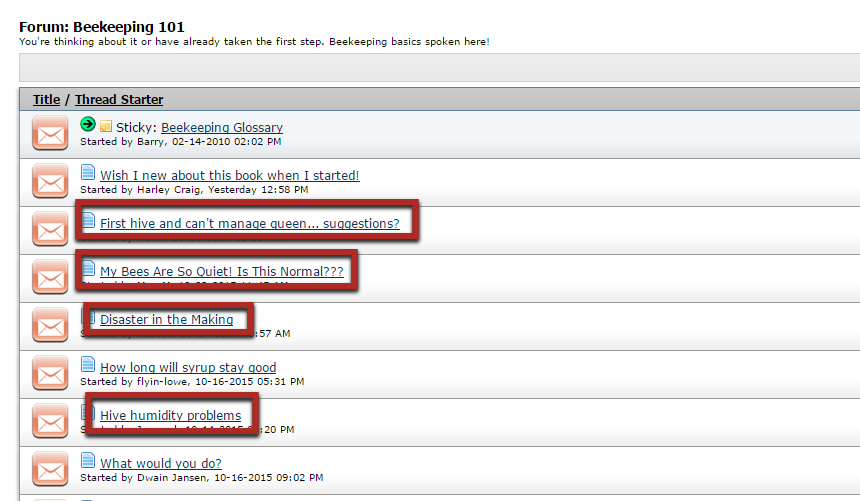
This is a great way to find out about their problems, which make great content ideas.
Or you can research demographic data using sites like Alexa.
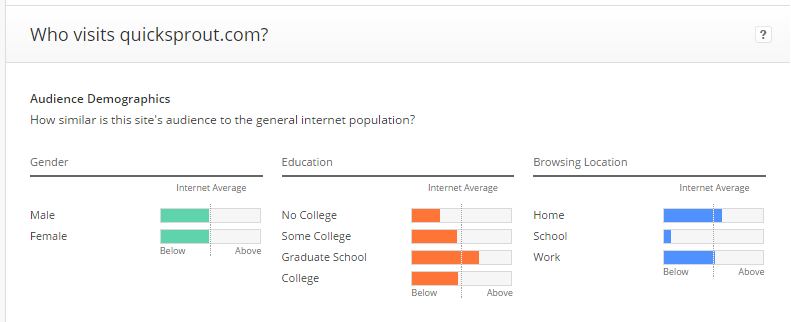
Demographics are a key part of building a reader profile.
These are three of many options.
Great content marketers keep digging until they have as clear of a picture of their reader as possible.
They do this before they ever start writing.
An hour of research here might save several hours of work in the future.
Research #2 – To understand your product: Selling products isn’t an accident. You need to have a plan to effectively sell anything with content marketing.
Many inexperienced content marketers will say, “I’ll worry about the product later,” and focus on just producing content.
BIG mistake. Why?
Because when you do that, you don’t ensure that your product matches your audience’s needs.
This is called product-market fit.
Instead, you need to figure out how your content should relate to and add to the promotion of any products you sell.
This is where research comes in.
There are two main scenarios that you’ll need to be comfortable in.
The first is when you’re hired by a company that already sells a product. You need to research the product and understand what it does (and sometimes how it does it).
Pretend I hired you to manage the Crazy Egg blog. How could you do it without understanding the product?
You wouldn’t be able to create product tutorials or content that features the software until you get familiar with it:

While that’s far from the only content produced on the blog, it’s a type of content that plays an important role in the sales process.
The other scenario is when you don’t have a product yet.
Research is even more important in this case.
You’ll need to find out which products your audience will pay for and potentially how to create those products as well.
Finally, and most importantly, a great content marketer knows how to research content topics.
You need to know what you’re talking about in order to write a high quality article.
This involves knowing how to look up high quality journal articles as well as other resources:
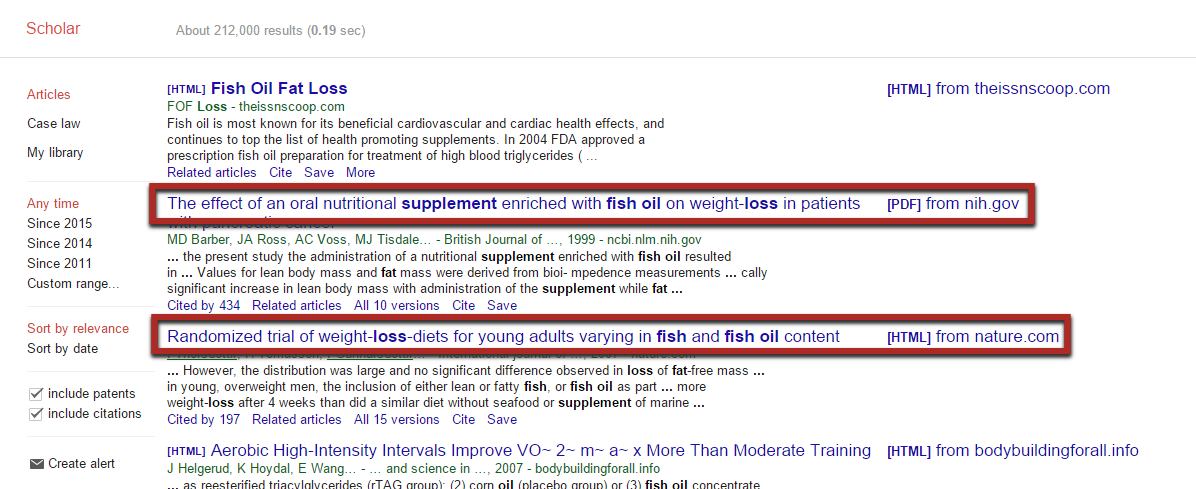
It also involves spending the time understanding those resources.
If you’re writing about advanced topics, this takes considerable persistence, and many weak content marketers will simply find a lower quality resource instead.
Great content marketers aren’t lazy.
Reason #3 – To solve problems independently: The final main reason why research is an important skill for content marketers to have is because without it, you’ll often get stuck.
Content marketers will always be faced with questions and problems:
- What should I write about?
- What’s the best format for this content?
- How do I create this form of content?
- I don’t understand this topic, so what do I do?
Let me give you a realistic scenario…
Let’s say you’re keeping up with the latest SEO posts, and you see this filter before a list of tools on Backlinko:

And you think: “A filter like that would really improve a piece of content I’m working on.”
Here’s the problem: there’s no simple plugin to do it for you.
So, what then? Most will give up. A great content marketer, however, will dig in and figure it out.
They will learn that the filter uses a simple Javascript script.
Now, most content marketers don’t know how to create one of their own. However, the best will find someone who can make one.
They’ll head over to Odesk or Upwork and create a job posting for a developer.

(That’s not a relevant posting to this problem, by the way.)
The big difference between a good and bad content marketer is persistence.
Great marketers will keep researching until they find the answer to their problem. That’s what makes them stand out from everyone else.
Reason #4 – To improve your email outreach results: A lot of modern day promotion is based on email outreach, and it’s important you understand some basic numbers.
Most effective tactics will have a conversion rate of 5-10%. That means that for every 100 emails you send, 5 to 10 will end up in links. The actual percentage will depend on a lot of factors, e.g., your niche, copywriting skills, and quality of content.
Keep in mind that the conversion rate I quoted above is for the best tactics. Most tactics will have a lower conversion rate.
What does this mean in terms of research?
It means that you’ll have to send a ton of emails as part of your promotional campaigns. You’ll want to get at least 20-30 links to the content you’ve spent a few hundred dollars on creating.
In most cases, that means you’re sending 400+ emails, sometimes thousands.
Over time, that number won’t seem that big, but at first, I understand why that would seem like a ton.
In reality, there are two big components to this:
- sending the actual emails and
- researching hundreds or thousands of good prospects
The research usually takes more time than sending the emails, at least until you establish key relationships in your niche.
Since you’re dealing with hundreds or thousands of data points, it’s crucial that you work efficiently.
This usually means working with tools and knowing how to use them effectively.
For example, you could manually search for resource pages to target for a link. You could probably create a list of 100 in an hour or so.
Or you could simply find a similar type of content, plug it in a tool such as Ahrefs or Majestic, and have a list of hundreds or thousands of targets in seconds.
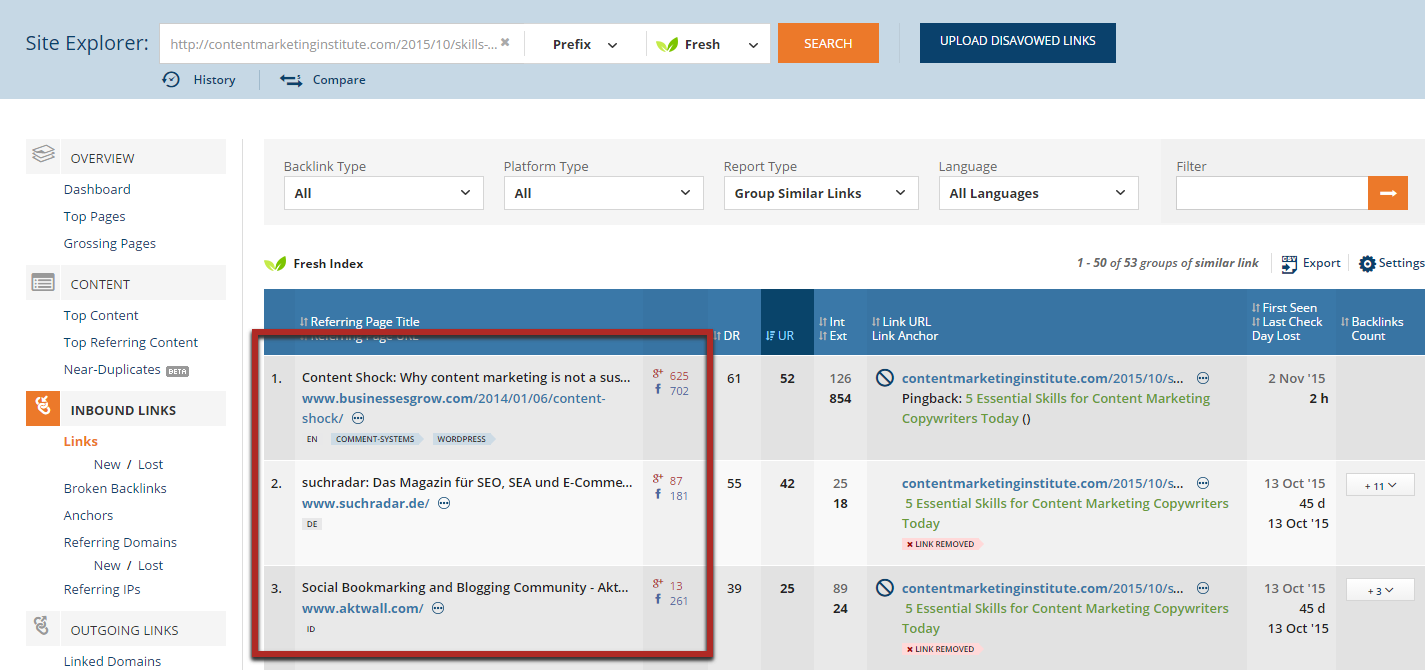
Work smarter, not harder (when possible).
4. Are you able to determine what is and isn’t important?
By now, you understand pretty well what promoting consists of.
And to be honest, it’s an insane amount of work.
You could easily hire someone (or multiple marketers) just to do promotion for your content.
In most cases, you can’t do that.
Instead, you need to find a way to balance content creation with content promotion while running other parts of your business as well.
Introducing the 80/20 rule: The skill I’m focusing on in this section is your ability to identify which of your actions produce the most results.
There’s a fairly established rule called the 80/20 rule (or Pareto principle).
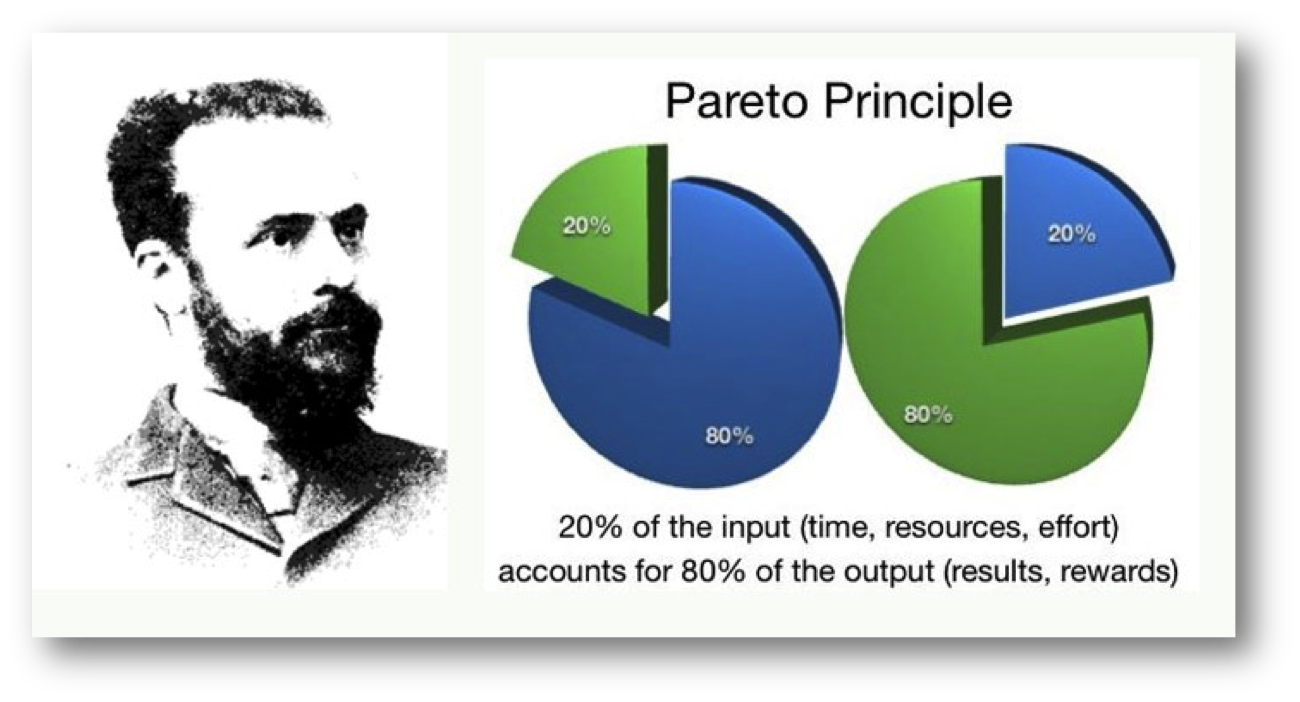
It states that 80% of your results come from 20% of your effort. And it applies to just about everything.
One of the things it applies to is content promotion:
- 80% of your traffic will come from 20% of the links
- 80% of your links and traffic will come from 20% of your promotion tactics
In almost all cases, if a sample size is large enough, these numbers will be fairly accurate. They may differ by 5-10% in each direction, but the effect remains the same.
Using the 80/20 rule to eliminate fluff: The reason why I showed you this rule is because it’s possibly the most effective way to save a lot of time without losing much in the way of results.
In fact, you can often get better results in less time once you understand how the rule works in your case.
By breaking down your efforts and results, you can determine which of your efforts are contributing the most to your results.
Then, you can cut out all the rest. Why spend 80% of your efforts on only 20% of the returns you want?
Instead, use that extra time you freed up to double or triple down on that 20% of activity that actually produces results.
Here’s what it might look like in practice…
Track all your efforts and results, then eliminate waste: You never want to guess what is and isn’t effective.
Instead, start by tracking what you do to promote content, how much time you spend on it, and what you get in return for that effort.
Tracking time is pretty straightforward, but you’ll have to track your other metrics using tools such as Google Analytics (for traffic) and Ahrefs (for links).
Here are some hypothetical results:

The traffic per hour value is calculated by dividing the traffic from that activity by the time spent on the activity.
I used traffic as the main goal for this promotional campaign, but yours could be links, social shares, or whatever else you’re looking for.
Finally, you can calculate the percentage of results value by dividing the traffic per hour value by the total “traffic per hour” amount (e.g., 300/1466 for email outreach). This is a fair comparison since they are all based on a “per hour” basis.
What we see is that almost all of the results come from email outreach and emailing subscribers (about 88%). Those two activities take up 5.5 out of 11.5 hours of effort, or a little under 50% of the total effort.
This also illustrates that it doesn’t matter if there’s a perfect 80/20 ratio. You just want to see which activities are producing the least from your efforts.
In this case, you could cut out over half of your effort and lose only about 12% of the results, a great trade off.
Even if this time was spent just on more email outreach, you could take your total traffic from 2,500 to about 3,500 (a 40% increase).
If you wanted to spend more time emailing your subscribers, you could do it indirectly by spending the extra time trying to get more subscribers. This could be done by creating lead magnets or by employing other tactics to try to improve your conversion rate.
The bottom line is that you need to be efficient.
Find any effort that isn’t producing results (like screwing around on social media), and cut it out. You don’t have time to waste if you want to be a good content promoter.
5. Content takes many forms; being able to create it starts with writing
Although content marketing is a niche of marketing, it’s still fairly broad.
Content can take many different forms:
- text posts
- infographics
- videos
- slide shows
- tools
- charts
- e-books
While it’s good to know how to create all types of content, they all, to some degree, involve writing.
Even making videos requires you to produce a script.
As you also know, most content marketing is done in the form of blog posts—typically text- and image-based content.
There are a few skills that go into being a good writer (and content marketer).
Skill #1 – Basic writing ability: There’s a common misconception about what it takes to be a “great writer” (at least when it comes to web content).
No, you don’t need to be able to write an essay like you were taught in school.
No, you don’t need to have an extensive vocabulary with tons of fancy words in it.
In reality, great writing for most situations is very simple. As long as you can write while following basic grammar and have enough of a vocabulary to express your ideas, you’re fine.
Basic writing ability also includes a few more things.
Research, as we talked about before, is one.
In addition, do you know how to use the writing tools at your disposal? Can you work in MS Word or Google Docs and know how to format your content?

Can you then take that post and format it in a major content management system such as WordPress and Drupal?
No, it’s not difficult, but you still need to know how to do these things.
If you don’t, spend a bit of time Googling and learning how to make the most of modern writing tools.
Skill #2 – Being able to write persuasively: When everyone has the same basic writing tools (that we just went over), how do great writers stand out?
Using the same words doesn’t mean you’ll have the same message. The words you choose will have a large effect on how interesting your content is to read.
You want to be able to write persuasively and conversationally:
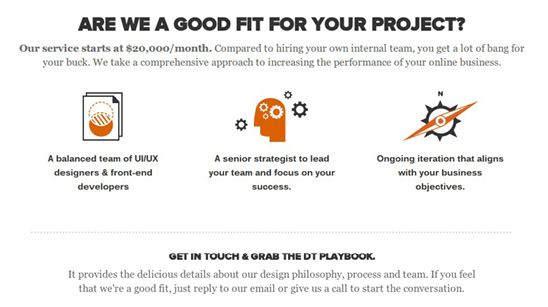
Writing persuasively begins and ends with how well you understand your reader.
If you know exactly how they think, you can guide them from one thought to another until they reach a conclusion that provokes action.
This takes practice, and the more you write, the better you’ll get.
Additionally, you want to write conversationally.
It’s not complicated. There are only two main aspects:
- Use first and second person pronouns – e.g., “you”, “us”, “your”, “we.”
- Use the reader’s language – use the same words they do to describe their problems.
You can see that writing persuasively and writing conversationally overlap because to be good at both, you need to understand your readers’ language.
Skill #3 – Being able to come up with the right kind of ideas: There are some fantastic writers out there who make poor content marketers.
While they can write well when given a topic (or guidance on which topics are best), they struggle to see how it all fits together.
It’s not enough to come up with ideas to write about. You have to come up with content ideas that address readers at each step of the buying process.

In addition, you need to take interesting angles on each topic so that people actually would want to read them.
Let’s look at an example.
If you follow multiple marketing blogs, you’ve seen several posts on video marketing in the last few months.
These are typically along the lines of “X tips on using video marketing effectively.”
A post like that doesn’t have an angle to it. There’s no hook.
Instead, I wrote a post titled “4 Clever Ways Videos Can Help You Attract Customers”.

My readers are smart. They don’t want to do video marketing for the sake of it; they want to do it to achieve a result.
So, I took an angle on this topic. I showed how videos can be used to get more customers.
That’s something readers are actually interested in.
Skill #4 – Being able to write efficiently: Finally, it’s worth noting that the best content marketers are able to crank out high quality posts on a regular basis without burning out.
They can only do this by writing fast.
They’ve all developed a process that works for them, and it’s something that you’ll have to do as well.
If you’re a slow writer, read how you can double your writing speed.

One final note about this is that it will take time.
Everyone is a slow writer when they start. At that point, focusing on quality is most important.
Once you have a handle on that, then start focusing on producing content at a faster and more consistent rate.
6. Social skills on the Internet?
Marketers come from all sorts of backgrounds.
A large portion of the new generation of Internet marketers was attracted to the profession because it offered a chance to make money without truly interacting with people.
Or at least that’s what they thought.
If you want to be a legitimate and successful marketer, you need to have at least basic social skills.
You need to know how to communicate with co-workers, influencers, and your readers in a way that doesn’t seem awkward or manipulative.
This comes down to basic human interaction, especially in emails.
A lot of promotional success comes down to building relationships with people, and if you can’t hold a conversation, in any medium, it’s going to be tough to succeed.
Most people have these basic social skills, but if you think yours can be improved, read Ramit Sethi’s The Ultimate Guide to Social Skills, which is by far the most useful guide on the subject I’ve come across.
7. The ability to care about others will take you far
It’s a harsh truth.
No other website owner truly cares about your content.
So, when you email them asking them to take a look at it and give you a link of some sort, it’s tough to get a positive response.
That’s why good marketers never just ask for things.
Instead, they provide value upfront.
They do something nice for an influencer, and most people return the favor. It’s called the rule of reciprocity.

That’s a very simple concept that every marketer should know.
What really sets good marketers apart, however, is empathy.
Empathy just means that you’re good at viewing things from the perspective of others and understanding how they feel.
It’s an important skill in all parts of marketing, but especially promotion.
It’s another one of those skills that help you understand when certain tactics should be used.
For example, consider broken link building.
The idea is that you find broken links on someone’s website and then you let them know about the broken links and suggest yours as a replacement.
It’s a completely valid tactic in some cases…
Empathy allows you to understand what people care about.
The guy managing a resource page in your niche? He probably cares about keeping the page as up-to-date and useful as possible.
Why? Because the whole page is dedicated to links that help the visitor. If those links are dead, it has a big impact on the usefulness of the page.
Here’s an example of what one might look like.
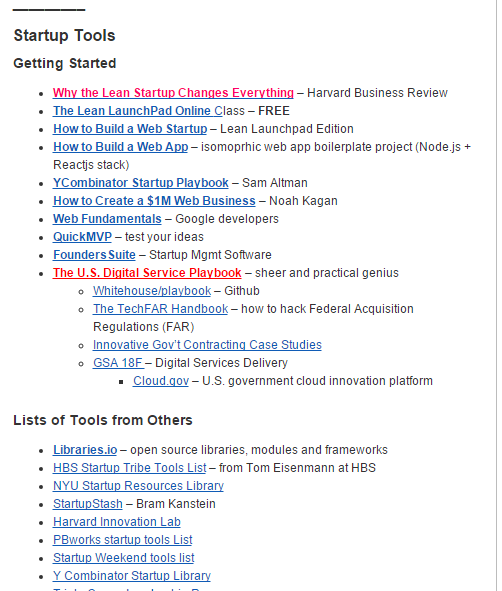
What about the guy running a small blog? He also probably cares about broken links.
What about me? If someone emailed me telling me that I have broken links on Quick Sprout, how much would I care?
To be honest, not very much. I have hundreds of articles on Quick Sprout, so it’s inevitable that I’ll have a few dead links here and there.
I realize that dead links aren’t good for readers, but it’s honestly a small concern compared to all the other work I currently have to do for the site (and my other sites).
So, when people email me about dead links (they do quite often), they are not going to get my attention.
They’ve failed to understand the value I place on the broken links.
The reciprocity principle can work on just about anyone, but first, you need to give the other person something they value.
Can you develop empathy? I’m of the opinion that you can develop empathy just like any other skill.
However, it’s probably the most difficult skill to teach because I can’t just give you a guide or offer a course on it.
Instead, the only way to get better at it is to consciously put yourself in someone else’s shoes as often as you can.
Try to guess what they care about, and if possible, confirm it by having a conversation with them.
My best advice would be to pick five people you know every day, and answer questions like these for all of them:
- “What are the things I value most in my life?”
- “How much do I care about my professional life?”
- “How often do I try to do something nice just to try to be a good person?”
- “How loyal am I to my friends?”
You’ll probably have to do a little bit of Internet snooping for each person to answer these questions. Hopefully, you’ll begin to notice that you start thinking from another person’s perspective automatically when you’re trying to contact someone to promote your content.
8. A sloppy marketer is an unproductive one
A single piece of content may often have an entire campaign created around it, consisting of hundreds or thousands of emails.
Mix in a few different tactics, and there is a ton of data you need to keep track of.
This skill is a basic one: organization.
If someone asks you why they should hire you, they won’t be impressed if you tell them you have amazing organization skills. That’s because it’s expected.
If you can’t keep track of what you’ve done and what you have to do, there’s no way you’ll be able to run an efficient promotional campaign.
I’ve gone into it in great detail in the past, but for now, understand that there are three main components to organization as a marketer:
- Attitude – You need to want to be as productive as possible for yourself, your boss (if you have one), and your readers. This means you understand the importance of organization and put in the effort required.
- Technology – I write a lot about different tools you can use to be a more effective marketer. There’s a reason for this. Tools are a key part of working efficiently and staying organized. Even basic tools such as Google Docs and Trello go a long way when it comes to keeping track of things.
 3. Adapting – Staying organized is a commitment. You need to commit to staying up-to-date with relevant tools. You have to commit to keeping track of all your work, even on days when you feel a bit lazy. When something new is added to the promotional campaign, you need to find a way to fit it into your organizational structure.
3. Adapting – Staying organized is a commitment. You need to commit to staying up-to-date with relevant tools. You have to commit to keeping track of all your work, even on days when you feel a bit lazy. When something new is added to the promotional campaign, you need to find a way to fit it into your organizational structure.
When you have thousands of emails to send and keep track of, you need to have an organizational system in place.
9. Will your content promotion be effective in the future?
A sign of a good content marketer isn’t how much they know.
That’s because in a field such as marketing, knowledge goes stale quickly.
What worked even a few years ago doesn’t work now.
What’s more important is that you are continuously learning.
One part of that is reading other marketers’ blogs. Since you’re here, I’m guessing you have that covered.
Even just reading one post a day adds up quickly.
I suggest using a tool such as Feedly so that you don’t waste time monitoring when posts come out (or just become an email subscriber of your favorite blogs).

A good portion of marketers do that first part.
What they don’t do is experiment.
Marketing may not be a field of science, but you constantly need to test different tactics and strategies.
You need to be able to quantify what does and what does not work effectively.
For the most part, this involves split-testing.
For example, you might want to determine the effectiveness of sending an initial email to someone without asking for a link in that first email.
To do this, you would send some emails that did ask for a link right away and some that didn’t.
Then, once you had a valid sample size, you could compare the results.
From there, you could continue to test different approaches.
It’s crucial to test on a regular basis because all tactics will become less effective over time. It’s up to you to try to find more effective tactics before they become “ruined” by all the other marketers out there.
If you’re new to testing, it can seem intimidating, but it gets simple once you know what to do. Here are some guides to testing that will walk you through the entire process:
10. Can you lead AND follow?
Content promotion campaigns can take many different forms.
One component that often changes is the role you have to take.
Sometimes, you’ll do all the work yourself. That’s pretty straightforward—you just do things the way you like.
But you might be part of a marketing team and will likely need to follow instructions.
Even more common, you might find yourself having to lead. I say it’s more common because even if you do all your marketing yourself, you can start hiring freelancers to help you with certain parts of promotion.
Or you might want to hire content creators so that you can spend more time on promotion.
Here are a few good guides on managing help effectively:
11. No time should be wasted waiting, which is why you need to be a jack-of-all-trades
There’s another area that I think will continue to become more important.
And it doesn’t contain just one skill, but a few different ones.
I’m talking about two in particular:
These are “accessory skills.” You don’t need them to be a great content marketer.
However, they will help.
There are two main benefits of having some skill in either of these (you don’t need to be an expert).
First, it will save you time.
Instead of having to hire a developer to create a simple script (like that filtering example we looked at earlier), you could do it yourself.
Typically, being able to do something like that can save you days when producing a piece of content.
Add that up over many instances, and a content marketer who can code or design becomes even more valuable.
The second main benefit is that it will help you come up with better content ideas.
When you understand the role of design and coding in content, you start to see opportunities where they could be used to improve content.
Instead of just making a list post, you might think of creating a sortable list post where each item has its own custom icon.
But if you have no knowledge in these two areas, it’s never going to cross your mind unless something tells you to do it.
Helpful skill #1 – Coding: For the non-programmer, coding is very intimidating. It’s actually simpler than it looks (for most basic things).
In particular, for content marketing, you’ll want to learn three different languages:
Yes, technically HTML and CSS aren’t programming languages, but to a non-coder, they all appear similar.
The first two are the simplest and affect how your content shows up on a page.
Javascript is an actual programming language that allows the visitor to interact with a web page (and run a script).
You don’t need to become an expert, but you should be able to sort out simple problems.
For example, if a picture isn’t showing up correctly on a page, what do you do?
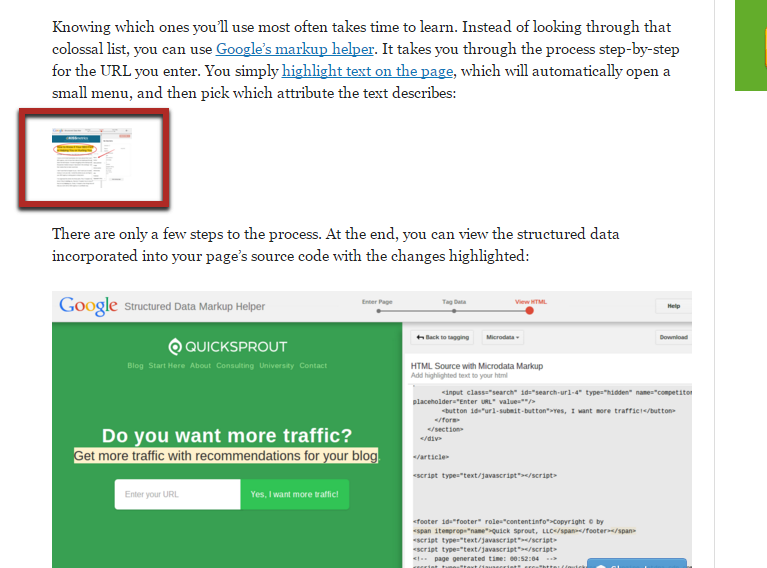
That’s a simple issue. You really want to avoid having to find someone who can help you fix it because that results in wasted hours.
Instead, you can go into the page source, find the error, and then fix it (in this case, the image width was wrong):
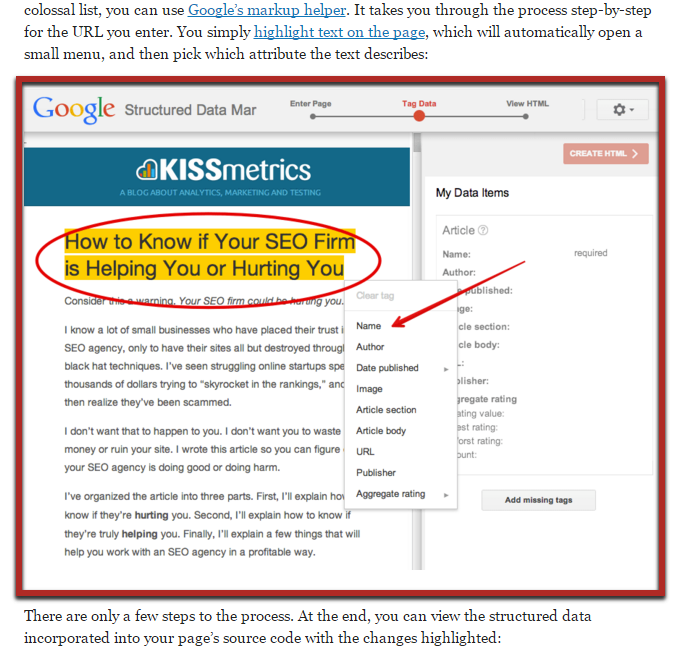
That fix should take less than a minute.
So, how do you learn these?
Take them one by one, and start with the Codecademy track for each of them:
If you complete each of those, you’ll be ahead of the majority of marketers.
Helpful skill #2 – Design: Design skills can be used for just about every piece of content.
Think of the number of times a custom image could improve your content. Probably at least a few times a post.
One option is to hire a freelance designer to create them, which isn’t a bad option.
However, it’s silly to be waiting for a freelancer when all you need is one simple picture.
You don’t need to be an expert, but you should have basic design skills.
I can show you 90% of what you need to know in a single post. And that post is my guide to creating custom images for your blog post without hiring a designer (like the one below).

12. The world of marketing will always change: those who adapt will survive
If you look at the great content marketers of today, you’ll notice something.
They were great marketers a few years ago although they might have had a different title.
All industries evolve over time and shift to new areas.
When a shift occurs, usually over a few years, everyone has a decision to make:
Should I adapt?
Some never make it and fall into obscurity.
There are still SEOs who are preaching tactics from the early 2000s that are no longer effective.

They never adapted to the changes in the SEO industry because they were afraid of losing what they had gained.
But the people you see who stay consistently at the top of their fields are always looking to learn about the “next thing.”
They adapt no matter what the circumstances are.
What this means to you as a content marketer: Content marketing, as we define it today, is still relatively young.
It’s only going to grow in the foreseeable future.
However, that doesn’t mean it won’t change.
Content marketing itself will continue to evolve. It’s up to you to always keep learning and improving your skill set.
Many poor content marketers know how to implement only one tactic or strategy successfully.
However, that’s not enough. A single tactic or strategy will never work in all situations. Also, it may not work in the future.
The best content marketers right now know how to use a wide variety of tactics and strategies depending on the situation (client, niche, resources, etc.).
They are also continually testing new ones to stay ahead of everyone else.
For you, this means that you need to keep learning.
When you find something that works, by all means use it. However, don’t think that you “figured it all out.”
Conclusion
Don’t get me wrong, content creation is incredibly important.
However, as far as the overall content marketing effectiveness goes, content promotion is often more important.
Furthermore, there’s a smaller percentage of marketers who know how to effectively promote content, so it really separates them from the rest.
If you want to be the best content promoter you can be, you need to develop all of the skills and techniques that I went over in this article.
Take a minute to honestly assess your skill level in each area. Then, come up with a plan to improve it, but focus on your biggest weaknesses first.
If you do, you will see your value as a content marketer rising, and you will get to the top of the field in time.





























 3. Adapting – Staying organized is a commitment. You need to commit to staying up-to-date with relevant tools. You have to commit to keeping track of all your work, even on days when you feel a bit lazy. When something new is added to the promotional campaign, you need to find a way to fit it into your organizational structure.
3. Adapting – Staying organized is a commitment. You need to commit to staying up-to-date with relevant tools. You have to commit to keeping track of all your work, even on days when you feel a bit lazy. When something new is added to the promotional campaign, you need to find a way to fit it into your organizational structure.



















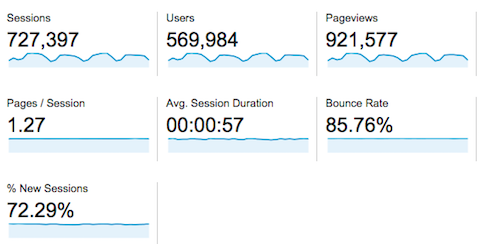

 3. Product offer (last 1-5 emails) – Finally, you want to offer your limited time discounts or bonuses. This is more important if you’re selling something like a course that is only available during a certain time period.
3. Product offer (last 1-5 emails) – Finally, you want to offer your limited time discounts or bonuses. This is more important if you’re selling something like a course that is only available during a certain time period.












